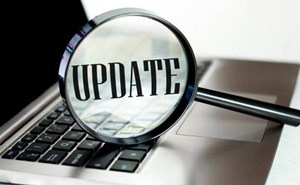
Top 5 reasons your paracentesis did not get billed correctly (and how to fix it!)
Matthew Lipton, MD, FACEP, FPD-AEMUS
Paracentesis is a frequently performed procedure in the emergency department (ED) that is associated with relatively high RVUs. Most EM physicians perform the paracentesis procedure with ultrasound (US) guidance, as compared to the traditional landmark based technique. However, many EDs are not accurately billing for the use of US guidance, resulting in missed revenue opportunities for work that has been provided.
This discussion will focus on strategies to enhance charge capture by first assessing whether billing discrepancies exist and then outlining practical solutions to address them.
First, you must know if you are billing appropriately for US guidance. Contact someone from your Revenue Cycle Services (RCS) team to request data from the last 12 months. Specifically, ask them to review billing activity associated with the following two CPT codes:
49082 - paracentesis without US guidance
49083 - US guided paracentesis
If you notice a significant proportion of CPT 49082 (without) vs 49083 (with), you likely need to make a few adjustments to improve charge capture. This should start with a chart review for the ED encounters where a CPT 49082 was billed. During this review, look for the top 5 reasons that your paracentesis did not get billed with ultrasound guidance:
- The physician was not aware that static guidance (ie, "mark and go") counts as US guided paracentesis.
There is a common misconception that to bill for an US guided paracentesis, the procedure needs to be performed with dynamic US guidance (i.e. the use of US to follow the needle tip in real-time), as opposed to the static US guidance (ie, the use of US to mark an anatomic location but perform the procedure without real-time needle tip visualization). This concept is incorrect. For non-vascular procedures, static and dynamic ultrasound guidance are equivalent in terms of billing. And it is up to the physician to determine the number of clips or images needed (but the minimum requirement to bill for an US guided procedure is saving at least 1 image of the relevant anatomy/pathology).
- The physician did not save ultrasound images to an archival system (i.e. PACS, middleware, picture in the procedure note, etc.)
To bill for any point-of-care ultrasound, US clips/images need to be permanently archived in case of audit by hospital or insurance payers. If you are using middleware software such as Telexy QpathE, SonoSite Synchronicity, Butterfly Compass, Exo Works, etc., then the US clips/images need to be linked to the patient's MRN as well. If you do not have middleware software, it is permissible to use a smartphone to capture a HIPAA-compliant image of the ultrasound screen displaying relevant anatomy or pathology, provided that this practice aligns with institutional policies and local standards for privacy and data security. The image may then be incorporated into the patient's procedure note. However, this method is generally less preferred due to limitations in quality assurance and the inability to track the exams.
- The physician filled out the procedure note without mentioning US guidance was used.
The procedure note must mention that US guidance was used during the procedure. If this is a problem in your ED, consider contacting your EMR/IT team to add 2 additional mandatory questions to the paracentesis procedure note:
"Static or dynamic ultrasound guidance used?" and "Images Stored?" If both answers are yes, then the medical coders should bill for the US guided procedure.
- The ultrasound guided paracentesis CPT code is not automatically added on the paracentesis procedure note.
Sometimes the medical billers will not recognize that a paracentesis was performed and therefore will not bill for it. To remove the possibility of human error, I suggest automating the addition of CPT codes to the ED encounter. Contact someone in your EMR/IT department that is responsible for updating the ED procedure notes. Often, they can link the correct CPT codes to procedure notes, so it is not dependent on the manual input of CPT codes by the medical billers. As discussed in the last paragraph, if you add the 2 questions to your procedure notes and both answers are yes, then the US guidance CPT code (49083) should be automatically added to the patient's encounter. But if either answer is "No", then the non-US guidance CPT code (49082) should be automatically added to the patient's encounter.
Pro tip: if you perform a POCUS prior to the paracentesis but the patient has little/no ascites amenable to paracentesis, you can create a new ultrasound exam type that bills for the US evaluation of ascites (CPT 76705, 0.59 wRVU) without the paracentesis procedure.
- You did not use ultrasound guidance!
Of course if you don't use ultrasound for guidance, then you cannot bill for it. But the evidence shows that using ultrasound will reduce the risk of complications (especially bleeding1), which results in increased healthcare costs and increased hospital length of stay.2
If these five billing changes are correctly implemented, then your ED should see an increase in charge capture. Changing from CPT 49082 to 49083 is a 44% increase in total RVUs.
49082 = 2.18 total RVUs
49083 = 3.15 total RVUs
And one final tip, if you performed a paracentesis in the ED, then make sure to select "emergency major surgery" in the MDM portion of your note to show the increased risk for the patient encounter and increase your charge capture even further!3
References
- Cho J, Jensen TP, Reierson K, Mathews BK, et al. Society of Hospital Medicine Point-of-care Ultrasound Task Force; Soni NJ. Recommendations on the Use of Ultrasound Guidance for Adult Abdominal Paracentesis: A Position Statement of the Society of Hospital Medicine. J Hosp Med. 14:E7-E15.
- Mercaldi CJ, Lanes SF. Ultrasound guidance decreases complications and improves the cost of care among patients undergoing thoracentesis and paracentesis. Chest. 2013;143(2):532-8.
- 2023 Emergency Department Evaluation and Management Guidelines - Question 62. American College of Emergency Physicians. Updated November 2023. Accessed September 1, 2025.



